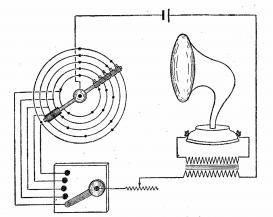Sometimes, the dull sound of tapping on a shoe box could be heard in the lab. At other times, much more complex installations of interconnected instruments made precisely measured, rhythmic sounds. In this project, I study what I call secondary or auxiliary sounds in the psychological laboratory—sounds and auditory practices used in experiments that did not have audition as their primary research object. I examine the sometimes elaborate, sometimes improvised techniques for creating controlled sounds in psychological labs; the sort of sounds that were heard there; and the variety of roles assigned to auditory phenomena in these investigations. My focus is on twentieth-century experimental psychology laboratories in Paris and Louvain during the interwar and postwar periods. There, experiments into various media effects increasingly became part of the psychological research program, making for interesting shifts in perception research.
Secondary sounds can help us to understand the history of perception research and its different layers and temporalities. Focusing on how sound techniques were inscribed into a range of psychological experiments offers insights into notions of auditory perception that were current in the broader profession at the time, experts on psychological topics who were not necessarily specialized in audition. The ways that sound and hearing were routinely used serve here as an indication of the contemporary understanding of perception—showing, among other things, how different knowledges on perception coexisted in the period.

